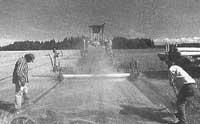Poison that can save lives
2000/07/30 Carton Virto, Eider - Elhuyar Zientzia
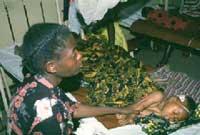
Dichlorodifenyltrichloroethane, DDT, was first synthesized in 1874 and its insecticide properties were discovered by Swiss chemist Paul Hermann Muller in 1939. The researchers soon discovered that it was very effective against the lice of pesticides, fleas, mosquitoes and a series of insects that attacked crops and, almost at the same time, most of the developed nations of the world began to produce this pesticide of broad and economic use. Among mosquitoes, DDT kills those that cause typhus, malaria and yellow fever. For this reason, in a few years it became the most used weapon against all kinds of pests.
II. Shortly after the World War, however, a debate began on the effects of DDT on nature. In that debate had much to say the marine biologist Rachel Carson, since the book Silent Spring, published by this woman in 1962, was the beginning of a change of vision on DDT. The book related the use of DDT with the loss of various bird species and the relationship between pesticide and cancer. But by then the chemical compound was in the body of fish, cattle and in general all living. Still today, traces of DDT can be found in the body of any person.
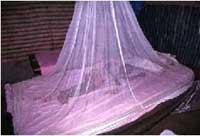
Subsequent studies have allowed DDT to damage and hinder the growth of the immune system of the fetus or newborn baby, which has caused the males of some species of fish to become females, which alter the correct functioning of the hormones of all living beings, etc. It has been proven that DDT is very harmful. For this reason, from the 1970s, measures were taken for the use of pesticide, including DDT in the list of the twelve most polluting chemical compounds proposed by the United Nations, that is, those that must disappear in a few years, and that can currently be used in few countries and in very specific applications. One of these uses is to remove mosquitoes that contaminate diseases such as malaria.
Badly recovered
40 years ago the scientists thought that malaria was in the process of eradication: with drug cocktails they managed to kill the parasite organism that causes the disease and with the insecticide DDT, they finished with the host mosquito of the parasite. Mosquitoes began to develop mechanisms to resist insecticide and the responsible for malaria, the parasite organism Plasmodium falciparum, became resistant to most drugs. Today, the kingdom of mosquitoes that contaminate malaria is again huge. Deforestation and irrigation plans have created ideal habitats for the development of the mosquito larva and the warming of the planet has allowed to extend the disease to earlier cold regions.
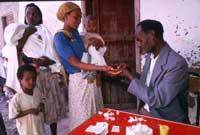
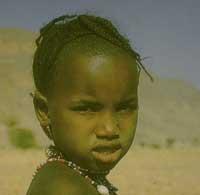
According to the World Health Organization, every year 400 million people are trapped by malaria and, although the disease is healing, about two million people are killed each year. Despite the risk of suffering from 40% worldwide, 9 out of 10 sick people live in sub-Saharan Africa. In addition, malaria attacks mainly children, being the most frequent victims of 5 years and more specifically about 3,000 children die every day of malaria. Most diseases and deaths occur, logically, among the poorest people in the poorest countries, who are not able to give adequate treatment against malaria. Therefore, prevention is fundamental.
Intense debate intense debate
But faced with such a serious problem, the positions here and there do not coincide. The World Health Organization launched the 1998 Roll Back Malaria campaign. The organization wants to halve malaria cases by 2010 and save half a million people every year. To this end, the affected countries have made available technical and economic means. One of the actions of the campaign is to provide each African child with a network of insecticide-impregnated mosquitoes. And it is that the mosquito that contaminates malaria attacks mainly at night and inside the house. In addition to mosquito nets, other materials impregnated with insecticide aim to become a usual domestic tool.
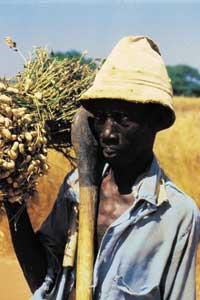
As for DDT, the World Health Organization (WHO) has shown support for maintaining the pesticide. According to the organization, it is not possible to stop producing DDT until finding effective ways to protect human beings from malaria. Countries that are affected by malaria need time and resources to establish adequate and sustainable alternatives and ensure they can use DDT over time. Not only that, but we must also ensure that DDT is produced enough to be able to use it. In fact, despite the fact that in recent years cleaner pesticides have been developed against the mosquito that contaminates malaria, DDT remains more efficient and economical.
In the Central American state of Belize, for example, the spraying of DDT in rural houses caused the disappearance of malaria in the 1960s. However, when in the 1980s they stopped urinating, malaria began to multiply. As a result, they had to resume homes by periodically spraying with DDT. In 1999 the Mexican factory producing DDT (the last in the western hemisphere) failed and the insecticide Belize could not be bought. In the last year it has used an insecticide three times more expensive than DDT, effective but consuming 98% of its budget to fight malaria. In South Africa they also abandoned DDT in favor of other pesticides, but mosquitoes have become resistant and last April they had to start with DDT again.

The World Health Organization (WHO) has stated that controlled use of DDT and environmental risk is very low. Moreover, it has qualified negligence to renounce such an effective weapon in the absence of alternatives. Not everyone agrees. In some places and thanks to the grants, local programs that do not serve DDT have been launched, since this pesticide is not always effective. In addition, they have denounced that in regions with satisfactory results few investigations are carried out and the dependence of the pesticide is being guaranteed. They insist on the need to launch a powerful and aggressive campaign against malaria to find new methods of malaria prevention and to be able to do without DDT. Meanwhile, the fate of millions of people is at stake.
Alternatives to the pesticide
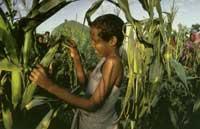
The team that works with great passion for the rapid disappearance of DDT is the conservation organization of nature WWF. WWF launched a campaign a couple of years ago to allow the production and definitive use of DDT for 2007. They believe that it is possible to combine the prohibition of DDT with the fight against malaria. Research has been conducted in India, the Philippines, South America, Mexico and West Africa. During the investigations, insecticide-impregnated mosquito nets were used, devices that attracted and killed mosquitoes and pesticides less polluting than DDT in alternative cycles.
These measures helped protect 34 million people in West Africa. In some villages in Tanzania the disease was reduced by 50% and in the Philippines as a whole by 40%. WWF argues that DDT is not the only effective tool to combat malaria and that there are examples in the fight against pesticide in many places. Its objective is to replace DDT and to do so, it has requested the help of rich countries, which have the moral and ethical need to help rich countries eliminate substances so harmful from developing countries. If technical and economic assistance is not offered to the countries affected by malaria, the possibilities of exclusion of DDT would be reduced considerably, since this pesticide is effective, very cheap and comfortable to use.
Published in the supplement Natura de Gara

Gai honi buruzko eduki gehiago
Elhuyarrek garatutako teknologia



